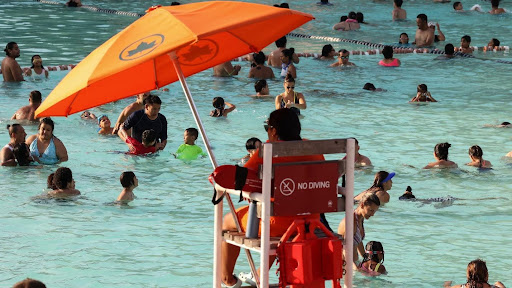Lifeguarding is a dynamic profession that requires ongoing training and skill maintenance to ensure the safety of swimmers and patrons in aquatic environments. Lifeguard recertification is a process that allows certified lifeguards to renew their credentials, update their skills, and stay current with the latest safety protocols. In this article, we’ll delve into the importance of lifeguard recertification, the process involved, and how organizations like the American Lifeguard Association (ALA) support lifeguards in maintaining their certifications.
1. The Importance of Lifeguard Recertification
Lifeguard recertification is essential for several reasons:
- Skill Maintenance: Lifeguarding skills, such as CPR, first aid, and water rescue techniques, require regular practice to maintain proficiency. Recertification ensures that lifeguards stay sharp and capable of responding effectively to emergencies.
- Updated Knowledge: Lifeguarding protocols and techniques evolve over time as new research and best practices emerge. Recertification provides lifeguards with the opportunity to learn about the latest advancements in water safety and rescue.
- Legal Compliance: Many jurisdictions require lifeguards to hold a valid certification to work in public swimming pools, beaches, and other aquatic facilities. Lifeguard recertification ensures that lifeguards meet the necessary training standards to comply with local regulations.
- Professional Credibility: Recertification enhances a lifeguard’s professional credibility and demonstrates to employers and the public that they are committed to maintaining their skills and knowledge.
2. Lifeguard Recertification Process
The process for lifeguard recertification typically involves the following steps:
- Eligibility Check: Lifeguards must meet certain eligibility criteria to qualify for recertification, such as holding a current lifeguard certification and completing any required prerequisite courses.
- Refresher Course: Lifeguards may be required to complete a refresher course, which reviews essential lifeguarding skills and updates them on any changes to protocols or guidelines since their initial certification.
- Skills Assessment: Lifeguards are evaluated on their CPR, first aid, and water rescue skills to ensure they meet the proficiency standards set by the certifying organization.
- Written Exam: Lifeguards may need to pass a written exam covering topics such as emergency procedures, water safety, and legal responsibilities.
- Recertification Card: Upon successful completion of the recertification process, lifeguards receive a new certification card indicating that they are current and compliant with lifeguarding standards.
3. ALA Lifeguard Recertification
The American Lifeguard Association (ALA) offers recertification programs designed to support lifeguards in maintaining their certifications. Here’s how ALA facilitates the lifeguard recertification process:
- Flexible Options: ALA provides flexible recertification options to accommodate lifeguards’ schedules and preferences. Recertification courses may be offered in-person, online, or through a blended learning format.
- Updated Curriculum: ALA’s recertification courses include updated curriculum that reflects the latest research and industry standards in lifeguarding. Lifeguards receive training on new techniques, equipment, and protocols to enhance their effectiveness on the job.
- Experienced Instructors: ALA-certified instructors are experienced lifeguards who provide expert guidance and support throughout the recertification process. They ensure that lifeguards receive personalized attention and feedback to help them succeed.
- Continuing Education: In addition to recertification, ALA offers lifeguards opportunities for continuing education and professional development. Lifeguards can access refresher courses, workshops, and resources to stay informed about the latest trends and advancements in water safety and rescue.
4. Conclusion
Lifeguard recertification is a vital component of maintaining a safe aquatic environment. By renewing their credentials and staying current with the latest safety protocols, lifeguards can continue to fulfill their role effectively and protect the lives of those enjoying aquatic activities.
With organizations like the American Lifeguard Association (ALA) providing comprehensive recertification programs and ongoing support, lifeguards can confidently navigate the recertification process and remain at the forefront of water safety. By investing in recertification, lifeguards demonstrate their commitment to professionalism, excellence, and the well-being of the communities they serve.


